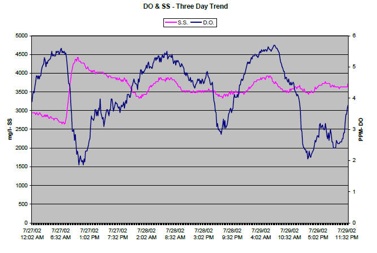Optical DO Case Study Summary
Envitech are suppliers of Optical Dissolved Oxygen monitors and sensors, mainly based on the solid state optical sensor manufactured by Insite IG in the USA. The sensor is available as part of a package, part of a hand-held unit or as an OEM sensor able to be used with third-party transmitters.
Please click the link for details and specifications of Envitech Dissolved Oxygen monitors
Fluorescent Dissolved Oxygen Measurement In Wastewater Treatment By Stephen Gilligan – Cancoppas Ltd.
Abstract:
Inadequately treated wastewater is a major source of nutrients entering fresh and marine environments. Nutrients such as nitrogen and phosphorous have a detrimental effect on the quality of the receiving body of water. Regulatory compliance typically stipulates maximum nutrient limits.
Biological nutrient removal (BNR) will alleviate the effect of waste in the receiving body of water. In a BNR process, a mixed population of naturally occurring micro- organisms simultaneously can be used to remove nitrogen, phosphorous, and biochemical oxygen demand (BOD). Oxygen is required to sustain the micro-organism population. Control of dissolved oxygen (DO) levels is an important component of a BNR program.
MODEL 2000 THREE DAY TREND
Summary:
The Model 2000 Mixed Liquor Analyzer is capable of monitoring both dissolved oxygen and suspended solids.
The graph displayed here shows a three day snapshot of a test that was conducted in a standard aeration basin at a WWTP located in South Louisiana. The entire test lasted for one month.
Demonstration of On-Line Dissolved Oxygen and Suspended Solids Analyzers
at the South Bermuda Water Reclamation Facility
Abstract:
The planned expansion of the City of Kissimmee’s South Bermuda and Sandhill Water Reclamation Facilities will require reliable on-line dissolved oxygen (D.O.) and mixed liquor suspended solids, (MLSS) measurements, since process control systems using these parameters as inputs are proposed. On-line D.O. probes have previously been used by the City, but were proven unreliable and maintenance intensive. To our knowledge, on-line MLSS meters have not been employed at any of the City’s facilities.



